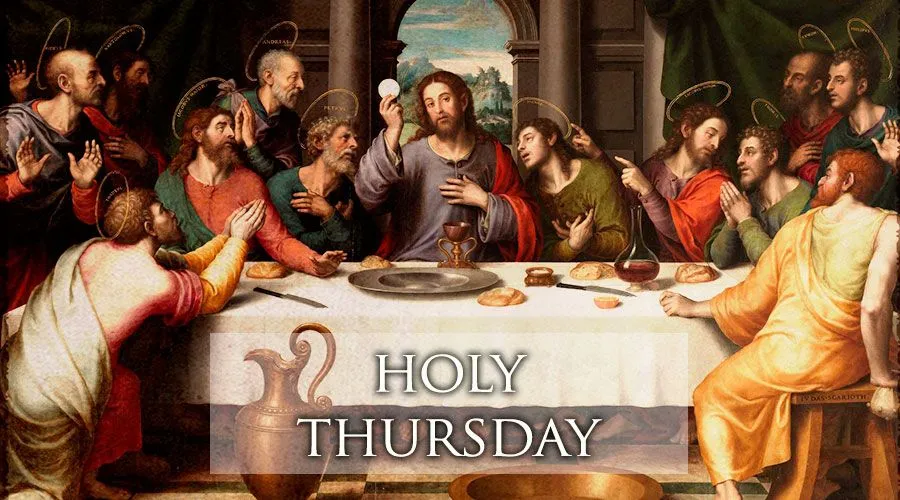Aboard the papal plane, 17 April, 2025 / 11:19 am (ACI Africa).
Holy Thursday is the most complex and profound of all religious observances, saving only the Easter Vigil. It celebrates both the institution by Christ himself of the Eucharist and of the institution of the sacerdotal priesthood (as distinct from the 'priesthood of all believers') for in this, His last supper with the disciples, a celebration of Passover, He is the self-offered Passover Victim, and every ordained priest to this day presents this same sacrifice, by Christ's authority and command, in exactly the same way. The Last Supper was also Christ's farewell to His assembled disciples, some of whom would betray, desert or deny Him before the sun rose again.
The Holy Thursday liturgy, celebrated in the evening because Passover began at sundown, also shows both the worth God ascribes to the humility of service, and the need for cleansing with water (a symbol of baptism) in the Mandatum, or washing in Jesus' washing the feet of His disciples, and in the priest's stripping and washing of the altar. Cleansing, in fact, gave this day of Holy Week the name Maundy Thursday.
The action of the Church on this night also witnesses to the Church's esteem for Christ's Body present in the consecrated Host in the Adoration of the Blessed Sacrament, carried in solemn procession to the flower-bedecked Altar of Repose, where it will remain 'entombed' until the communion service on Good Friday. No Mass will be celebrated again in the Church until the Easter Vigil proclaims the Resurrection.
And finally, there is the Adoration of the Blessed Sacrament by the people during the night, just as the disciples stayed with the Lord during His agony on the Mount of Olives before the betrayal by Judas.
There is such an abundance of symbolism in the solemn celebration of the events of Holy Thursday layer upon layer, in fact that we can no more than hint at it in these few words. For many centuries, the Last Supper of Our Lord has inspired great works of art and literature, such as the glorious stained glass window in Chartres cathedral, Leonardo's ever popular (and much imitated) Last Supper in the 16th century, and the reminiscence called Holy Thursday, by the French novelist,François Mauriac, written in the 1930s.



